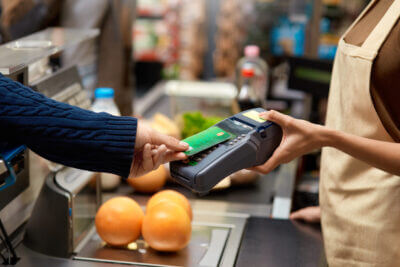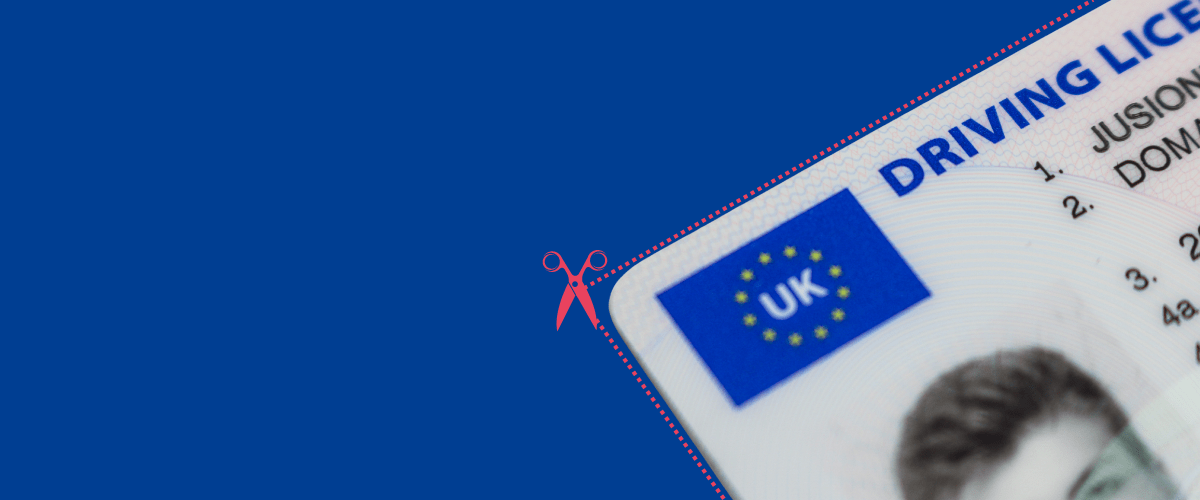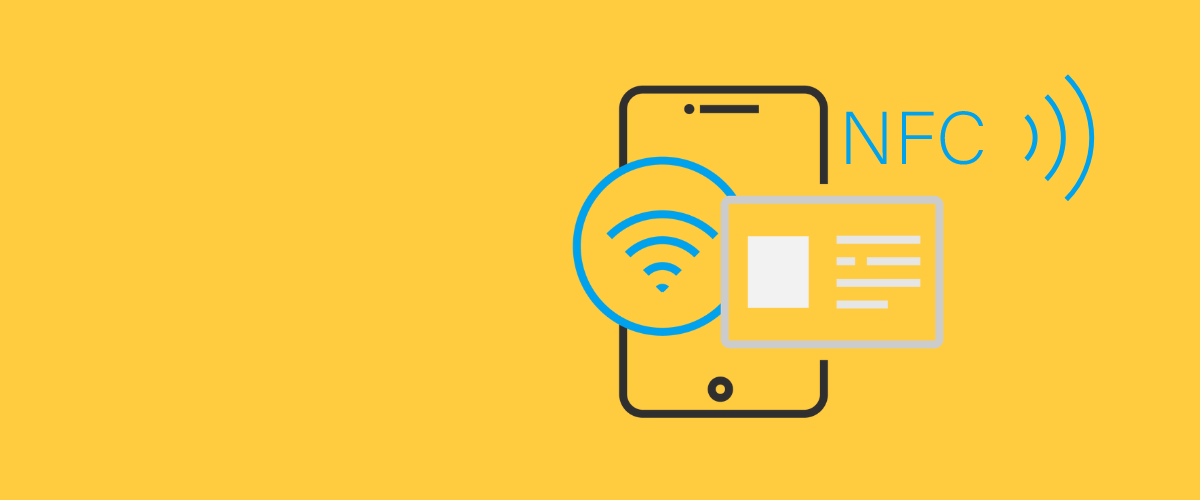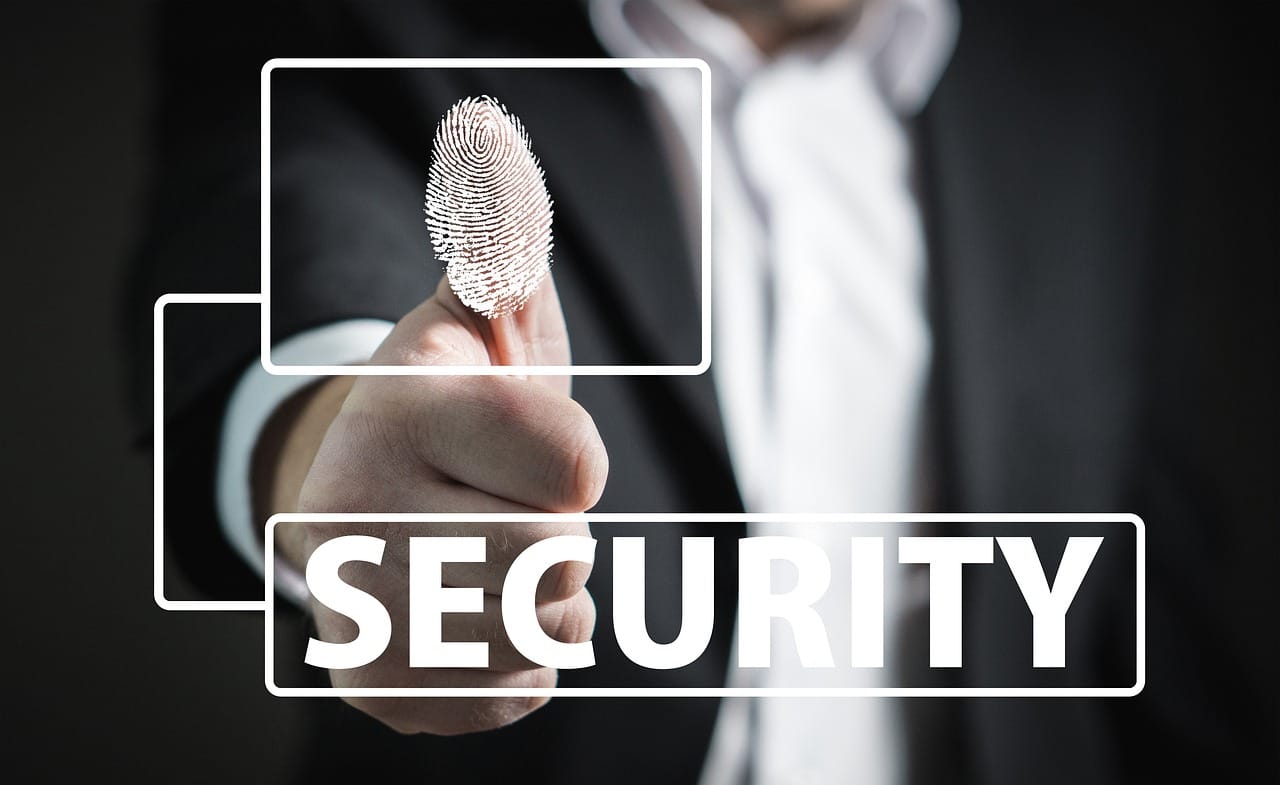Near Field Communication (NFC) is a technology that has been around for many years, but has only recently begun to be used in consumer-facing devices, such as contactless payment. In this article, you will learn what NFC is, why it is often confused with RFID, and ten use cases for NFC technology, including its application in identity verification.
What is Near Field Communication and how does it work?
Near Field Communication (NFC) is a technology that enables devices to exchange information and data wirelessly over short distances. NFC allows devices to communicate with each other without physical contact, similar to Bluetooth.
NFC data exchange always involves two components. A device with an NFC chip, such as a smartphone, is the active transmitter - it establishes the connection, reads the transmitted data, and processes it. The passive part is the NFC chip itself.
When two devices are connected that are both active NFC transmitters, this is called active mode. When an active transmitter is connected to a passive transmitter, it is called passive mode.
NFC technology works in three modes, which can be further divided into active and passive modes: Peer-to-Peer (active), Reader/Writer (active) and Card Emulation (passive).
- In Peer-to-Peer mode, two NFC-enabled devices can exchange data with each other.
- In reader/writer mode, an NFC-enabled device can read information from an NFC tag or card.
- In card emulation mode, an NFC-enabled device can emulate an NFC card, such as a credit card or access card.
NFC tags are small chips that can be embedded in products or printed on labels. NFC tags contain information that can be read by an NFC-enabled device. The tags can be used to store a variety of information, such as Website URLs, contact information, or even small amounts of data.
The difference between NFC and RFID
The terms NFC and RFID are often used interchangeably. RFID (Radio Frequency Identification) is a technology that uses radio waves to communicate between devices, typically over a distance of a few meters.
The main difference between NFC and RFID is the range over which they can communicate. NFC is designed to communicate over short distances, while RFID has a longer range. NFC is also faster than RFID, as it can transmit data at a rate of 424 kbps, while RFID typically has a data transmission rate of 106 kbps.
NFC is widely used for contactless payments with systems such as Apple Pay and Android Pay. It is also used in some public transportation systems, such as the Oyster card in London. RFID is used in a variety of applications such as contactless key fobs, security systems and inventory management.
For a deeper look at these differences, check out Blue Bite, a company that works directly with NFC and RFID technologies. RFID is "item oriented" and extends printed barcodes, while NFC is "user oriented" and extends QR codes.
| Feature | NFC (Near Field Communication) | RFID (Radio Frequency Identification) |
|
Communication Range |
Short distances (typically a few centimeters to about 10 centimeters) | Longer distances (typically a few meters to several meters) |
| Data transmission speed | 424 kbit/s | Normally 106 kbit/s |
| Applications |
- Contactless payment (e.g. Apple Pay, Android Pay) |
- Contactless key fobs |
| Usage | User-oriented, improves QR codes | Article oriented, improved printed barcodes |
The Benefits of Near Field Communication
As near field communication continues to evolve, new and innovative applications for NFC are likely to emerge. NFC technology is still in its infancy, but it has great potential. It could make many everyday things easier and more convenient.
Here are 5 reasons why we believe the use of NFC technology will continue to grow:
- It's secure. NFC transmissions have a short range, giving you more control over how you use the technology.
- It's versatile. NFC is easy to use in a wide range of industries and situations.
- The technology is open and standards-based. Universal standards give customers more choice and lead to robust systems.
- It works with a wide variety of systems. For example, smartphone-based NFC already works with existing contactless card technologies.
- There are working groups to implement the technology. NFC has several organizations, mainly industry-led, working behind the scenes to promote NFC, such as the NFC Forum.
How secure is NFC?
No technology is 100 percent secure against fraud. Even with NFC, data theft is theoretically possible. However, the person responsible would have to be in close proximity to the device. The short range of NFC is a clear advantage here, as it is very unlikely that a third party could access the data transmission. In particular, NFC offers increased security compared to data transmission via a WLAN connection, for example.
Ultimately, it depends on the context in which the function is used. For example, if you have an NFC-enabled credit or debit card that you occasionally use to pay without entering a PIN, it should not fall into unauthorized hands. If you plan to use your smartphone to make contactless payments via NFC, it is also advisable to use an antivirus program to prevent a possible virus on the smartphone from accessing the credit information stored in the NFC chip.
How is Near Field Communication used?
Near Field Communication is a versatile technology used in a wide range of applications, including retail, transportation, and banking. Here are 9 use cases:
- Contactless payments: Near Field Communication is used for contactless payment with a smartphone, where you hold your phone up to a terminal instead of your credit card to pay. NFC is also used for contactless card payments.
- Public transit: Near Field Communication for public transportation payments is a very practical use case. With NFC, passengers can pay their fare by briefly holding their NFC-enabled device (ticket or smartphone) up to a ticket reader.
- Controlled access: In a controlled access system, such as a workplace, hotel room or gym, the technology is used to read an NFC tag attached to an object. The NFC tag contains information that controls access to the item and can be read by an NFC reader connected to a control system.
- Travel: Most passports contain an NFC chip that can be read by NFC hardware. This is a boon to the travel industry, as it has led to faster border crossings and shorter transfer times on airplanes.
- Bodily implants: NFC chips can be implanted in the body of a person or animal to store information that can be read by an NFC reader. The chip can be used to open doors or make payments, or to store medical information such as allergies or medications.
- Embedded experiences: Art museums such as the Museum of London are using NFC to digitally enhance their exhibits. By scanning an NFC chip with a smartphone, visitors can access additional information.
- Product authentication: NFC chips can be embedded in luxury goods to protect them from counterfeiting and imitation.
- Task optimization / Management of assets: Near field communication can help optimize tasks or logistics by facilitating tracking and management. Using NFC tags, a user can quickly and easily determine what needs to be done and when.
- Smart homes: Smart homes use near field communication to communicate with devices and make life easier. NFC technology allows devices to communicate with each other without the need for a physical connection.
Identity Verification as a Special Use Case for NFC Technology
The 10th use case of NFC technology is digital identity verification, and PXL Vision is an expert in this area. So let's take a closer look at this last use case.
In the context of identity verification, Near Field Communication can be used to wirelessly transmit information such as a person's name, date of birth or ID card number from an NFC-enabled ID card to a reader or smartphone. The reader or smartphone can then use this information to verify the person's identity. Passports or ID cards with an NFC chip can be used for online identity verification.
PXL Vision offers state-of-the-art verification capabilities via NFC. This innovative technology enables companies and organizations to verify identities in a secure and convenient way. Using NFC, customers can securely read and transmit biometric data and identification information, taking identity verification to a new level. PXL Vision leverages the reliability and security of NFC to help organizations implement efficient and trusted identity verification processes to best meet the needs of their customers.
Interested in NFC verification? Then contact us today.
FAQ about Near-Field Communication (NFC)
Most modern smart phones are NFC enabled. To find out if your phone supports NFC, you can look for the NFC options in your phone's settings: There you can enable or disable NFC.
The NFC connection can be blocked by being too far away or by certain materials. In general, for a successful NFC connection, there should be nothing between the two devices or components, and the distance should be short.
Bluetooth has a longer range than NFC. Bluetooth can typically operate over several meters to tens of meters, while NFC is limited to very short distances (a few centimeters to about 10 centimeters). Bluetooth also offers higher data transfer rates. It is often used for wireless headphones or speakers, for example.
.png?width=126&height=101&name=logo%20(2).png)
.png?width=63&height=51&name=logo%20(6).png)











